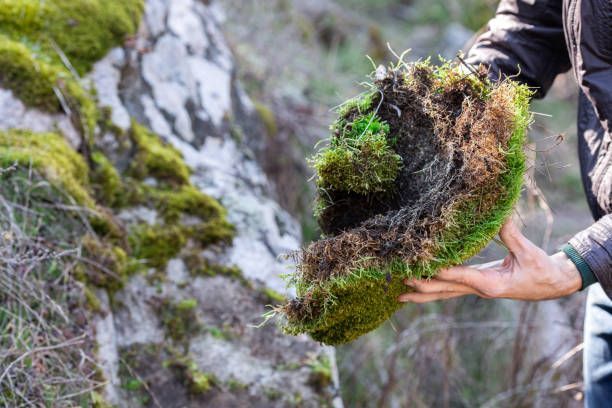Santa Clarita Tree Service
(661) 338-5661

Ball moss, a small epiphytic plant often found clinging to tree branches, might seem harmless at first glance. While it doesn’t directly take nutrients from trees, its dense clusters can restrict sunlight, hold excess moisture, and limit airflow around branches.
Over time, this can weaken tree health, encourage pest activity, and create conditions for disease.
By removing ball moss, property owners not only improve the tree’s appearance but also promote better air circulation throughout its canopy. Improved airflow helps the tree maintain stronger, healthier growth and reduces risks of fungal or bacterial issues.
Understanding why ball moss removal is essential and how it impacts air circulation can guide better tree care practices.
How Ball Moss Restricts Airflow
Ball moss attaches to branches and twigs, creating thick clusters that disrupt the natural movement of air through the canopy. Poor airflow can trap humidity, making it easier for harmful organisms to thrive.
- Dense moss clusters block wind from passing freely between branches.
- Trapped moisture creates a breeding ground for fungi and bacteria.
- Lower airflow makes it harder for leaves to dry after rain, increasing disease risks.
- Accumulated moss can cause shaded, damp areas that stress the tree over time.
Benefits of Better Air Circulation After Removal
When ball moss is removed, the canopy opens up, allowing breezes to pass through more easily. This natural ventilation supports tree health in multiple ways.
- Reduces excess moisture that can lead to rot or fungal growth.
- Improves sunlight penetration, helping leaves photosynthesize more effectively.
- Keeps leaves and bark drier, reducing pest attraction.
- Encourages stronger branch development by reducing weight and crowding.
Best Practices for Safe Ball Moss Removal
Improper removal methods can harm the tree, so it’s important to follow safe, effective techniques.
- Use hand tools or pole pruners to gently remove moss without damaging bark.
- Prune dead or heavily infested branches to improve overall canopy airflow.
- Avoid chemical sprays that could harm beneficial insects or surrounding plants.
- Schedule removal during dry weather to minimise stress on the tree.
Long-Term Tree Care for Preventing Regrowth
Ball moss can return if the underlying conditions remain favorable. Ongoing care is key to maintaining good airflow.
- Regularly inspect trees for early signs of ball moss and address it quickly.
- Thin the canopy by selective pruning to keep branches from becoming too crowded.
- Maintain proper watering and fertilisation to strengthen the tree’s natural defences.
- Work with a professional arborist for periodic maintenance and monitoring.
Additional Environmental and Aesthetic Benefits
Removing ball moss isn’t just about tree health—it can also enhance the surrounding environment.
- Improves the overall look of the landscape by giving trees a cleaner appearance.
- Reduces the chance of broken branches caused by added moss weight.
- Creates a healthier habitat for beneficial wildlife by promoting robust foliage growth.
- Increases property value by keeping mature trees in top condition.
Ball moss may not be a parasite, but it can still impact a tree’s health by limiting airflow and creating conditions for disease and decay. Removing it not only restores better air circulation but also enhances sunlight exposure, moisture control, and overall canopy health.
With proper removal techniques and ongoing maintenance, trees can thrive with stronger growth, fewer pests, and a longer lifespan—benefiting both the landscape and the environment.